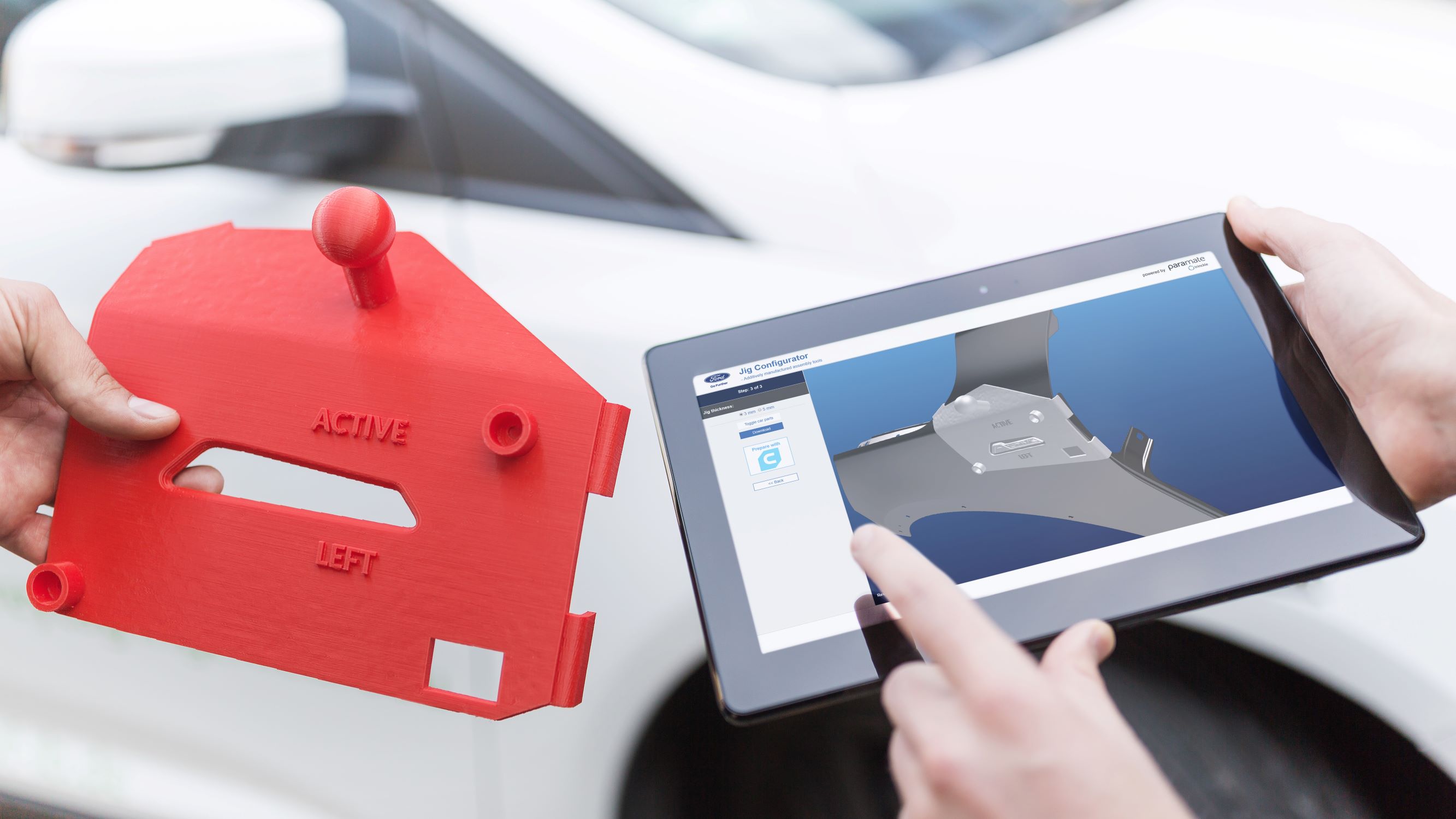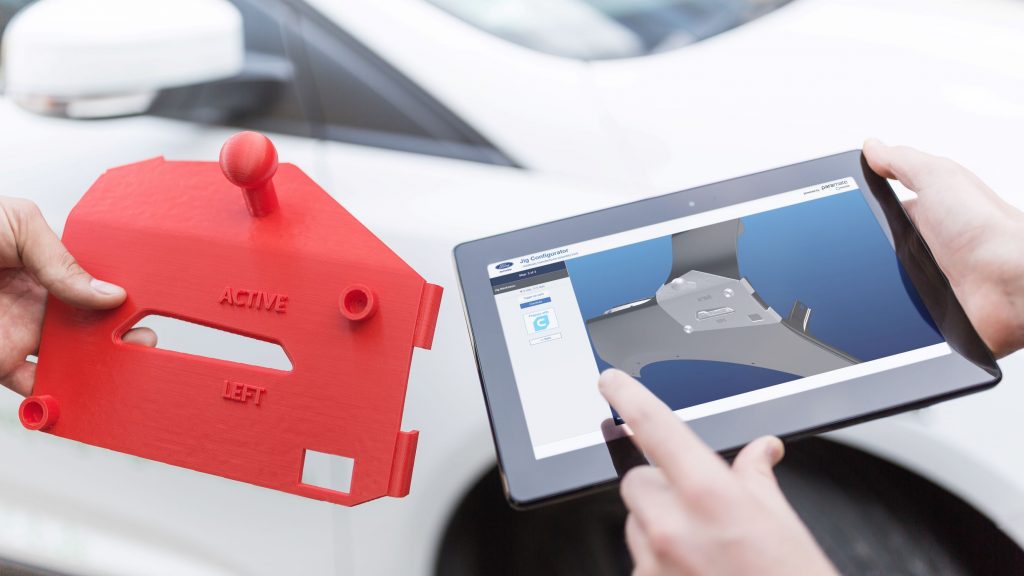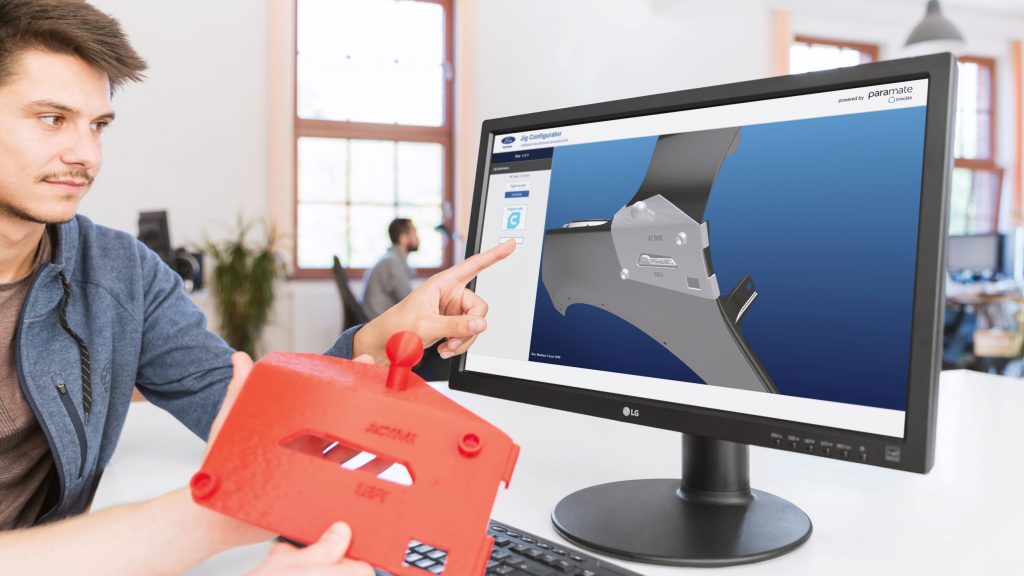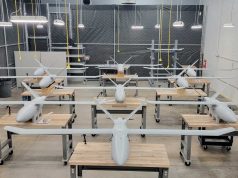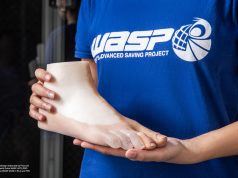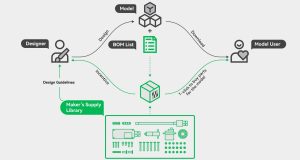Ford has been using additively manufactured production and assembly tools for several years. Up to 50% of the respective costs are related to the creation of design data. In order to scale the applications of Additive Manufacturing (AM), Ford is partnering with the software company trinckle to automate the design process. The application will be presented at the TCT conference @ Formnext on November 13th, 2018.
The use of additive manufacturing (AM) for production tools and assembly aids, for example hand tools such as jigs and fixtures, is not a new idea – neither at Ford nor at any other automotive manufacturer. The advantages of this application are obvious: relatively low production costs considering the low quantities, lower weight in comparison to their conventionally manufactured counterparts and faster availability in case of unscheduled demand. At Ford alone, more than 50 different additive manufactured tools are used in serial production today.
With this AM application, automotive manufacturers can reduce costs today. In contrast to many other innovations in the area of AM, which may certainly be more spectacular, but will pay off in a few years at the earliest. Cases like the one described above are low-hanging fruits.
However, Lars Bognar and Raphael Koch, responsible engineers at Ford Research & Advanced Engineering Europe, did not want to settle for this. They looked at the AM application as a whole. They use the example of a labeling jig which is a hand tool used to place model badges on the body of the vehicle.
“The additive manufacturing itself is no longer the dominating cost factor limiting the scalability of the application. Up to 50% of the total costs per tool are caused by the manual design, which is the new bottleneck. For each new line and each special edition, these tools must be specifically designed to position the badges with exact accuracy. This design task is not a trivial one, as the tools have to adapt precisely to the free-form surfaces of the car body sheet. It can easily last between two and four hours to create an appropriate AM-ready design. Time that is hard to spend for the designers, who are already working at full capacity. In the worst case, a short-term demand can result in a delay of assembly because the corresponding tools are not available. It was time for us to rethink the design process from scratch, and that’s when we came across the trinckle team.
– Lars Bognar, Ford Research & Advanced Engineering Europe
The Berlin-based software company trinckle is specialized in automated design and product configuration in the field of additive manufacturing. Using its cloud software paramate, trinckle develops software applications for the automated design of AM products across all industries. These applications can even integrate the user himself into the design process.
For Ford, trinckle developed an internal application for the efficient generation of labeling jigs – to create new jig designs within a few minutes. Within an intuitive user interface, the user simply uploads the model data of the car body and the badges to be placed. Then he adds some standard elements such as handles, magnet mounts for fixation, edge guides and text fields by mouse click. The underlying algorithms of the paramate software automatically generate the geometry of the tool – precisely fitting the contour of the car body.
The design process no longer requires 2-4 hours, but only 10 minutes. The handling is so straightforward that neither the qualification of a CAD designer nor AM-compliant design expertise is needed. As a result, employees at the assembly line are also empowered to design tools on their own. While feedback loops between tool users and designers used to be very complex, users are now enabled to carry out tool optimization iterations independently.
“The trinckle software application does not only dramatically reduce manual design times and costs, but also streamlines the entire process. We enable our employees on the shop floor to take over more responsibility and relieve our designers at the same time. The latter can focus on their core activities again”.
– Raphael Koch, Ford Research & Advanced Engineering Europe
For Lars Bognar and Raphael Koch, the automated creation of labeling jigs is a first and important step in the right direction. Many other additive tools will undergo similar automation in the future.
If you would like to learn more about the application, you can visit the Formnext (13.11.2018 – 16.11.2018) in Frankfurt. On 13.11.2018, Lars Bognar and Dr. Ole Bröker, Head of Business Development at trinckle, will present the joint project at the TCT conference @ Formnext. Furthermore, the project can be seen at the trinckle booth C07 in hall 3.0.
Subscribe to our Newsletter
3DPResso is a weekly newsletter that links to the most exciting global stories from the 3D printing and additive manufacturing industry.



